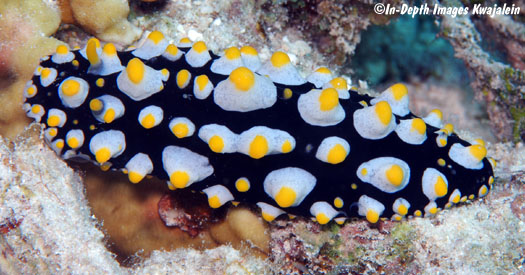
These would all appear to be variations of the common Indo-Pacific Phyllidia varicosa, although only rarely do Kwajalein specimens possess distinct longitudinal bluish ridges, one of the key characters of P. varicosa from many other areas (e.g., Hawaii, Philippines, Indonesia). Like P. tula, P. carlsonhoffi and P. elegans, P. varicosa bears a black line running from front to back on the bottom of its foot. This is a large phyllidiid, much like P. tula. We have seen these commonly at Enewetak and Kwajalein Atolls. John and Lynette Flynn have it recorded from Rongelap and it was found by Stan Jazwinski at Ailinglaplap. Phyllidia varicosa was first listed in the Marshall Islands from Bikini Atoll by Marcus (1965).
This species is one of a number of similar Mullerian mimics.

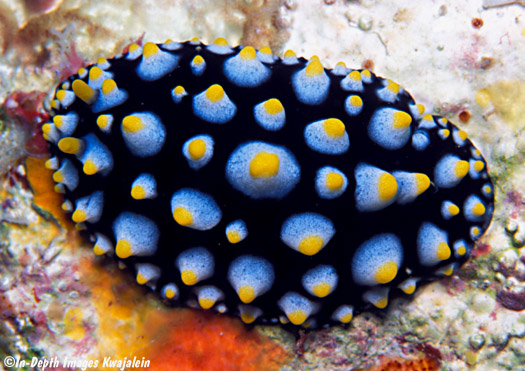
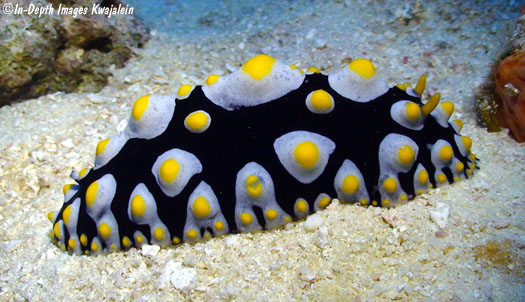
This pair ties a couple of the different color forms together.
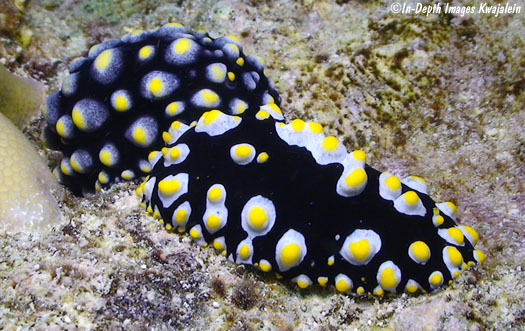
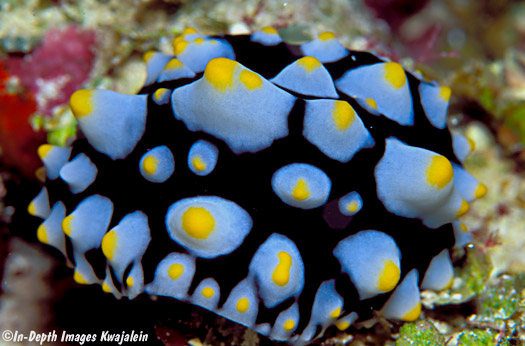
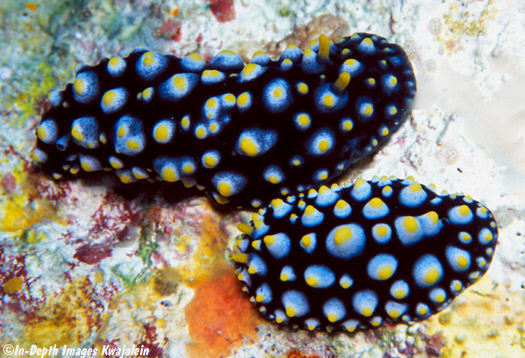
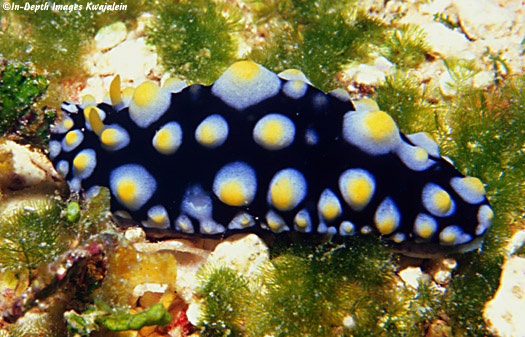
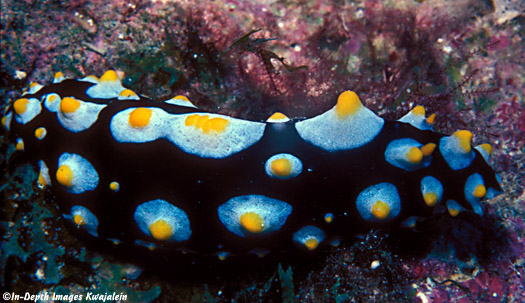
The photo below is a young specimen, more the length of a typical Phyllidia carlsonhoffi, but the bumps don't look anything like that species, and this animal is a lot more oval rather than elongate.
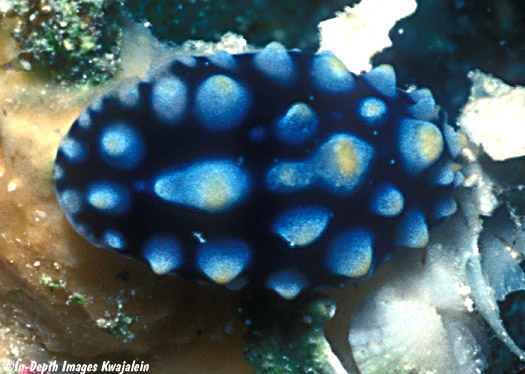
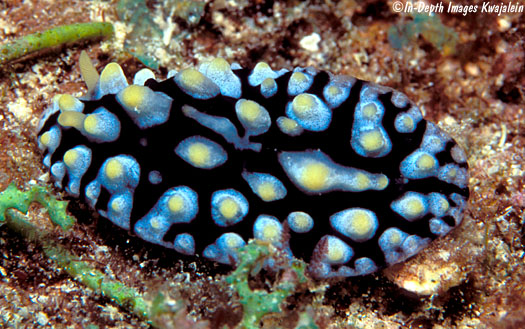
Looks like the dorsal bumps on the next one are kind of trying to form ridges.
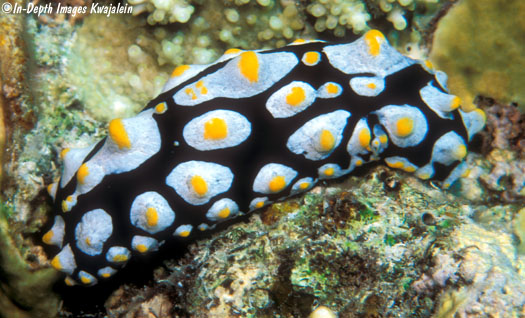
The Ailinglaplap specimen is immediately below.
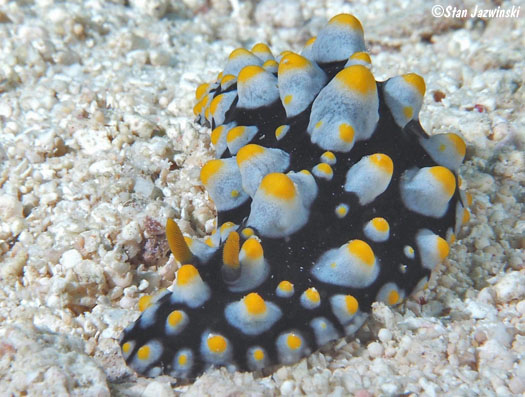
The next two show top and bottom of a specimen observed on Kwajalein Atoll's seaward reef at a depth of 8m on 31 May 2009.
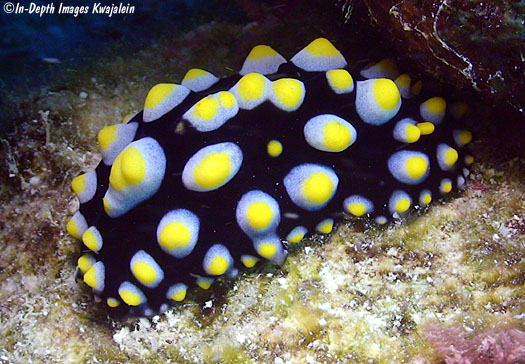
The foot bottom on this species is mostly somewhat light blue-gray with an irregular longitudinal black line.
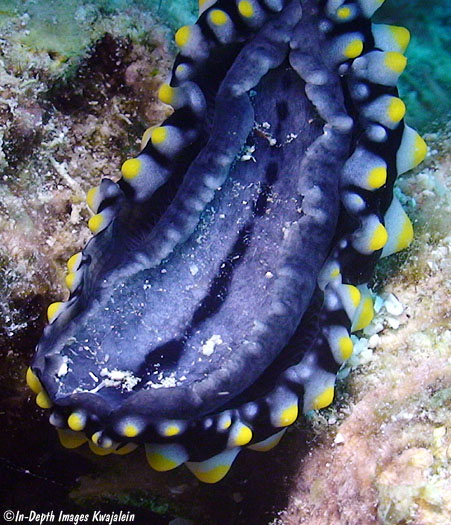
Only rarely at Kwajalein do we see specimens with ridges more typical of P. varicosa from other areas. The image below is a still captured from video on the Kwajalein Atoll seaward reef on 19 May 2008.
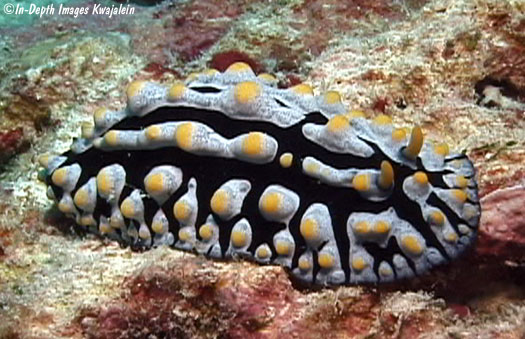
Brunckhorst's (1993) figure of Phyllidia carlsonhoffi below shows the white bases to the tubercles.
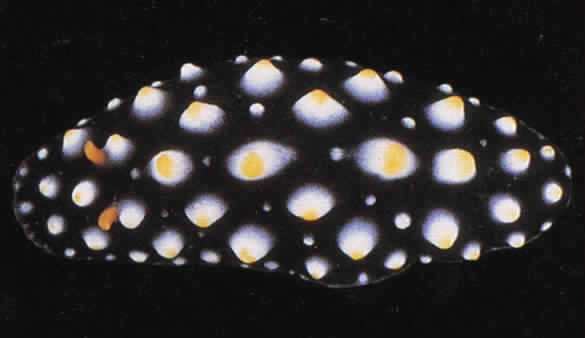
Created 25 December 2006
Updated 15 June 2025